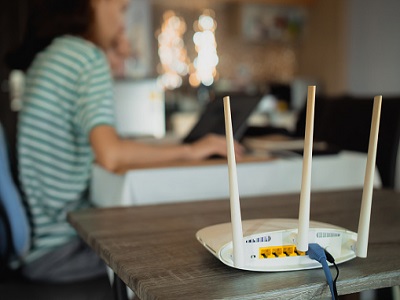Ethernet Protocols: How Networks Stay Reliable
Category : Nextelle Wireless | Sub Category : Nextelle Wireless Posted on 2025-04-25 15:59:55

Ethernet's
speed, scalability, and dependability have long made it the foundation of
contemporary networking. Its strong set of protocols is the foundation of its
long-term success. By regulating data transmission, these protocols make
networks reliable and effective in meeting the ever-increasing needs of the
modern digital world.
The
guidelines for communication between devices on a network are established by
Ethernet protocols. The Media Access Control (MAC) protocol, which controls how
devices exchange access to the network media, is among the most basic
protocols. Ethernet network stability is supported by the MAC protocol, which
keeps collisions at bay and maintains orderly communication. The way Ethernet
manages data traffic has been further improved by cutting-edge methods like
Carrier Sense Multiple Access with Collision Detection (CSMA/CD), which enables
networks to function flawlessly even when subjected to high loads.
Ethernet's
adaptability to different network infrastructure types is another important
component of its dependability. For example, the IEEE 802.1 family of protocols
provides characteristics like Virtual LANs (VLANs) and Quality of Service
(QoS). To preserve the quality of real-time applications, QoS makes sure that
important data—like speech or video—gets precedence over less urgent
information. VLANs increase network segmentation, which isolates traffic to
certain device groups, improving security and lowering congestion.
The
requirement for redundancy and fault tolerance in contemporary networks is also
addressed by Ethernet protocols. One excellent example is the Spanning Tree
Protocol (STP), which keeps network topologies from creating loops that can
impede data flow. Protocols like as Multiple Spanning Tree Protocol (MSTP) and
Rapid Spanning Tree Protocol (RSTP) provide more flexibility and faster
recovery for more complex scenarios, guaranteeing little downtime in the event
of network problems.
Ethernet
has developed with protocols like IEEE 802.3 standards, which regulate speeds
ranging from 10 Mbps to 400 Gbps and more, in the age of high-speed data needs.
Businesses may expand their networks using these protocols without sacrificing
efficiency. By minimizing power usage, innovations such as Energy-Efficient
Ethernet (EEE) further improve dependability and make networks more economical
and environmentally friendly.
Another
crucial area where Ethernet protocols excel is security. Strong authentication
procedures are made possible by protocols like IEEE 802.1X, which guarantee
that only devices with permission can connect to the network. Ethernet
protocols are essential for protecting sensitive data and upholding confidence
in digital communication because of their smooth integration with various
security frameworks.
Ethernet
protocols are the unsung heroes that maintain the dependability, effectiveness,
and security of networks. These protocols serve as the cornerstone of
Ethernet's flexibility in a quickly changing technological environment,
handling everything from traffic flow management to fault tolerance and
scalability. Ethernet protocols will continue to be essential to maintaining
the connected world as long as people and companies depend on high-performance
networks.
#ReliableNetwork #Internet #NextelleWireless
Search
Categories
Recent News
- Introducing the Latest Model of Apple iPhone: Cutting-Edge at Your Fingertips
- The Latest Model of Samsung Galaxy: A Remarkable Blend of Innovation and Style
- Unlimited Smartphone Plans for You
- The Latest Buzz in Smartphone News
- The Best Smartphone Options Available
- Existing Wireless Connection: Enabling Connectivity Beyond Boundaries
- Wireless Connection Devices: Revolutionizing Connectivity
- Smartphone Audio Quality: A New Era of Immersive Sound